Dates & Venue
Thursday, April 7 – Sunday, 10 April, 2022
Wolf Trap National Park for the Performing Arts, Vienna, Virginia.
Three days of scientific presentations and a day of educational outreach and performances. Presentations will include demonstrations within sessions, while public lectures and performances are on the fourth day.
Conference Venue:
The conference will be held at Wolf Trap National Park for the Performing Arts (https://www.wolftrap.org/), 1551 Trap Road, Vienna, VA 22182. Sessions 1-6 will be held in the Associates Pavilion. Session 7 will be held in The Barns.
UPDATED WORKSHOP COVID PROTOCOL
Conference participants should expect to show proof of vaccination or a negative covid test within the previous 48 hours. Since the conference will take place in The Pavilions, an open air space, masks will be optional.
In consideration of the CDC’s recently updated guidance, beginning April 1, masks are welcome, but not required, at The Barns at Wolf Trap.
Overview of Workshop Session Topics
Concurrent themes that run throughout all sessions: biological and social evolution of creative movement and its relation to music; learning and memory of complex motor sequences in creative movement; transformation of movement and performance to artistic expression; action and performance to perception; therapeutic and the life-enhancing value of creative movement.
- Session 1: Anthropological and Evolutionary Biology of Creative Movement – Nicky Clayton (Cambridge University)
- Session 2: Cognitive Neuroscience of Creative Movement – Aga Burzynska (Colorado State University)
- Session 3: AI, Robotics, Technology and Creative movement – Jose ‘Pepe’ Contreras-Vidal (University of Houston)
- Session 4: Creative Movement for Health – Citlali Lopez-Ortiz (UI Urbana-Champaign)
- Session 5: Embodied Cognition and Learning of Creative Movement – Kate Stevens (Western Sydney University)
- Session 6: The Shared Experience of Creative Movement: Improvisation, Synchronicity, and Creative Child Education – Asaf Bachrach (CNRS)
- Session 7: Dance Performance in Conversation with Music and Neuroscience and Educational Outreach at Wolf Trap – Jose ‘Pepe’ Contreras-Vidal (University of Houston) & Shihab Shamma (University of Maryland)

Thursday, 7th April
| 8:00 – 9:00 | Sign in |
| 9:00 – 9:30 | Welcome Shihab Shamma (University of Maryland) and Jose ‘Pepe’ Contreras-Vidal (University of Houston) |
| 9:30 – 12:00 |
Session 1: The Cultural, Anthropological, and Evolutionary Biology of Creative Movement Nicky Clayton (Cambridge University) and Mark Baldwin OBE (Mark Baldwin Studios): Dance as a Metaphor for Memory and Mental Time Travel: Exploring the role of Embodied Cognition. Aniruddh Patel (Tufts University): The evolutionary biology of human creative movement: insights from cross-species studies. |
| 10:30 – 10:45 |
Coffee Break Tecumseh Fitch (University of Vienna): Creative movement and Meter - Unpacking the Role of Rhythm in Movement. Erich Jarvis (Rockefeller University): A relationship between vocal learning and creative movement across species. |
| 12:00-1:00 | Networking Lunch (lunch provided in Pavilion) |
| 1:00 – 5:00 |
Session 2: The Cognitive Neuroscience of Dance Aga Burzynska (Colorado State University): The effects of dance on brain structure, function and cognition. Steven Brown (McMaster University): The neural basis of creative movement and partnering. Virginia Penhune (Concordia University): Dance, Music and Brain Plasticity: What we learn and when we learn it. |
| 3:00 – 3:15 |
Coffee Break Peter Keller (Western Sydney University): From sensory-motor to social influences on group music making and dance. Madeleine Hackney (Emory University School of Medicine): Effects of dance training in Parkinson’s disease, older adults, and people at risk of Alzheimer’s disease. Lena Ting (Emory University and Georgia Tech): Brain-body interactions for movement control across motor skill rehabilitation. |
Friday, 8th April
| 9:00 – 12:00 |
Session 3: AI, Robotics, Technology and Creative Movement Anthony Brandt (Rice University), Jose ‘Pepe’ Contreras-Vidal (University of Houston), and Andy and Dionne Noble (Sam Houston State University; Co-Artistic Directors, NobleMotion Dance): The Making of LiveWire: An art-science collaborative performance-study commissioned for a public performance/research study on April 10 at the Wolf Trap National Park for the Performing Arts. Anthony Brandt will discuss the neuroscience of theme and variations in LiveWire as a window into the creative mind. Andy and Dionne Noble will discuss the challenges and opportunities for studying creativity and skill learning in the LiveWire longitudinal collaboration. Pepe Contreras-Vidal will discuss the neural interface technology, decoding algorithms, and visualization in LiveWire and their deployment to study the creative process in action and in context. with Evelyn Toh and Shohei Iwahama from NobleMotion Dance Company, the Musiqa String Quartet (Bree Ahern, Evie Chen, Jacob Schafer, and Sebastian Stefanovic), Bryan Ealey (Lighting Design), and the University of Houston Noninvasive Brain-Machine Interface System Team (Mauricio Ramirez-Moreno, Nishant Rao and Komal Kukkar). Rima Peddi, Amit Rogel and Gil Weinberg (Georgia Tech Center for Music Technology) : FOREST is collaborative project between Georgia Tech Center for Music Technology and Kennesaw State University Dance Department. This NSF-supported project aimed at enhancing trust between groups of humans and robots through emotional driven sound and gesture. |
| 10:30 – 10:45 |
Coffee Break Christopher Fangundes (Rice University NEA's Research Lab): Mind-body impact of creativity engagement: Implications for cognitive aging. Aston K. McCullough (University of Massachusetts Amherst, NEA Research Lab): Methods and sensors for quantifying dance exposures. |
| 12:00 – 12:30 | Networking Lunch (lunch provided in Pavilion) |
| 12:30 – 5:30 |
Session 4: Creative Movement for Health Mark Hallett (NIH): Neural basis of normal movement, and the neurological disorders of movement. Citlali Lopez-Ortiz (Illinois at Urbana-Champaign): Targeted dance programs for motor rehabilitation, examples in cerebral palsy and multiple sclerosis. David Leventhal (Dance for PD at Mark Morris Dance Group, Brooklyn): Approaching Parkinson's with the mind of a dancer. |
| 2:45 – 3:00 |
Coffee Break Christina E. Hugenschmidt & Christina T. Soriano (Wake Forest University): Effects of dance on mood, balance and brain in Alzheimer’s disease. Lavinia Teixeira-Machado (Universidade Federal de Sergipe, Brazil): TALT dance program for communication and social reciprocity in autism spectrum disorder. Gregory Youdoin (Brown University): Huntington Disease and Dance Interventions. Peter Wayne (Harvard University): Tai Chi for Fall Prevention in Older Adults: Contributions of ‘top-down’ affective and cognitive processes. |
| 5:30 – 5:45 | Nicola Clayton and Mark Baldwin will conduct an innovative, participatory 15-20 minute session connecting tango with your inner bird. |
Saturday, 9th April
| 9:00 – 12:00 |
Session 5: Embodied Cognition, Learning of Creative Movement Beatriz Calvo-Merino (City University, London): Dance, Brains and Emotion. Guido Orgs (Goldsmiths, London) + Demonstrations: The neurocognition of dance and choreography. Akua Kouyate-Tate (Wolf Trap Foundation for the Performing Arts): Early Childhood STEM Learning through Dance: The Interchange between Practice and Research. Lise Worthen-Chaudhari (The Ohio State University Wexner Medical Center): Feasibility of social dance as a dual task training paradigm for adults with persistent post-concussive symptoms: a pilot study of symptoms, neuromotor control, and central myelin integrity. |
| 12:30 – 1:30 |
Lunch Hour Demonstration: Heidi Latsky – ON DISPLAY (lunch provided in Pavilion). Participate here: link It began as a series of free and public installations throughout NYC in honor of the 25th Anniversary of the Americans with Disabilities Act in partnership with Lincoln Center, Mayor’s Office for People with Disabilities, and Dance/NYC. It has grown into a social justice movement worldwide with a cast that is inclusive with respect to ethnicity, race, body size and shape, and age. As a commentary on the body as spectacle and society's obsession with body image, this human sculpture court exhibits performers as they claim their space as sculptures and allow the audience to view them in all their fierceness and vulnerability. “On Display/Boston is everything I want from a work of art: It is thoughtful and makes you think. It provokes reflection. It is full of spirit. It is full of beauty. It is inclusive. And it takes you deep inside yourself even as it expands the world around you.” David Henry, Bill T. Jones Director of Performing and Media Arts at the Institute of Contemporary Art |
| 1:30 – 5:00 |
Session 6: Creative Movement as cognitive neuroscience, as an epistemological model, as an enactive laboratory The presentations will be constructed as a space for dialogue between cognitive neuroscience and creative movement. Though scientists and dancers use very different tools or paradigms, they often ask very similar questions ‘about the brain’, relating to the dynamics of multimodal sensory-motor integration, motor control, empathy, attention, agency, affect and ultimately the nature of consciousness and the self. A group of the invited participants (an assemblage of scientists, creative movement professionals, and philosophers) will also spend a few days together before the workshop to prepare an innovative hybrid platform for trans-disciplinary perspective sharing and body-storming based on Lisa Nelson’s Tuning Score practice. Simple tools/scores from participatory improvisational dance will be used to forged shared experiences as a base for a conversation (among all participants of the workshop). The ‘empirical’ focus of the session will be on how we come to make sense of each other and together, and how to convey educationally these notions and exploit them in science education. Asaf Bachrach (Performer/spectator interactions): Synchronization, Attention and Transformation in Creative Movement and joint improvisation and in Virtual Reality. João Fiadeiro: https://www.numeridanse.tv/en/dance-videotheque/de-la-composition-en-temps-reel-joao-fiadeiro Margit Galanter: https://margitg.wordpress.com/ Lisa Nelson: https://en.wikipedia.org/wiki/Lisa_Nelson Nara Figueirdo (Center of Logic, Epistemology and History of Science): https://sites.google.com/view/naramfigueiredo/ Julien Laroche (The Center for Translational Neurophysiology of Speech & Communication at the Italian Institute of Technology) Joe Dumit (University of California, Davis) |
Sunday, 10th April
| 2:00 – 5:00 | Session 7 Glimpsing the Brain in Action Through Creative Movement Session organizers: Jose Contreras-Vidal (University of Houston IUCRC BRAIN) and Shihab Shamma (University of Maryland) A summary of conference ideas will be provided through education and outreach to the general public. This is intended to introduce and foster an understanding of the science of learning to move, from fundamental everyday movements to artistic expression in creative movement. This engagement of mind, brain and body has deep roots in human development and is vital to human health and well-being. This final session will highlight the joint engagement and perspective of scientists, artists, educators, medical practitioners and technologists in discussion of open research questions that are important for advancing our understanding of the social and neural basis of creative movement. Choreographers’ presentations include live demonstration, sample performances, verbal discussion and films. |
| 2:00 – 3:00 | Anthony Brandt (Rice University), Andy and Dionne Noble (NobleMotion Dance Company) and Jose L. Contreras-Vidal (University of Houston): For two decades Musiqa and NobleMotion Dance have been breaking artistic boundaries in Houston and winning national acclaim for their adventurous programming. At the same time, Prof. Jose L Contreras-Vidal, director of the IUCRC BRAIN Center at University of Houston and professor of electrical and computer engineering, has been pioneering nonsurgical brain-computer interfaces to understand the brain in action in clinical, artistic and classroom settings. For this workshop, for the first time, the groups converge to present the world premiere of LiveWire, an innovative collaboration between scientists, musicians and dancers who will wear EEG skull caps (brain caps), while performing a new work centered around a new string quartet by artistic director Anthony Brandt, set to choreography by Andy and Dionne Noble. The performance will be followed by a 30 min Q&A session; (https://musiqa.org/livewire-bios/). |
| 3:00 – 3:15 | Break |
| 3:15 - 3:30 |
Larke Johnson (Ladybug): Larke Johnson will be performing a 1.6 min choreography that she created for this event. The title of the piece is Ladybug, Larke’s childhood nickname. The music was composed by Claudia Brent, inspired by her young student Larke. Larke C. Johnson (age 17) a Chicago native, was diagnosed with cerebral palsy at 10 months old. Her diagnosis did not hinder her desire to be a ballerina. She began taking ballet lessons through an adaptive program with Shirley Ryan Ability Lab (formerly RIC) at age 5. In 2016, she secured a role in Joffrey Ballet’s Nutcracker. After that production, she began to take private lessons at Joffrey and continues to perform with the company. In the summer of 2019, she served as a student volunteer in a class for young dancers with autism. In addition to ballet, Larke enjoys horseback riding, swimming, and running. |
| 3:30 – 4:00 | Megan Bridge & Peter Price (Fidget): Morphic Resonance - an improvised duet by Fidget co-directors, dancer/choreographer Megan Bridge and musician/composer Peter Price. In this research- based performance project, a solo dancing body is set into resonance with the sound and space that surround it. Price creates ambient, droning electronic soundscapes, punctuated by percussive loops. Bridge builds movement worlds like architectures that are both kinesthetically expansive and minutely precise. Each new performance situation is approached as a frame that re-orients and gives new definition to the work. |
| 4:00 – 4:30 |
Grégoire Blanc is a young French musician, mostly known for his work involving the theremin - this very unusual musical instrument invented in the 1920s by the brilliant Russian scientist, Лев Термен. Holding two Master’s Degrees, one from the leading engineering school of Arts et Métiers and another one in sciences applied to music offered at Sorbonne University by IRCAM he decided to pursue a career in music. With its characteristic sound and its astonishing expressivity, the theremin has a huge potential, from classical music to contemporary creations, film scores, etc. Grégoire Blanc is renowned as a promising artist, and is regularly invited to perform in various contexts: orchestral performances, classical concerts, lectures, studio recordings, all around the world, from Canada to Kazakhstan. https://www.gregoireblanc.com |
| 4:45 – 5:30 | Discussion |
| 5:30 | Conclusion |
Acknowledgments:
The workshop is supported in part by the National Science Foundation, especially in Sessions 1- 4. Significant contributions have also come from:
• Wolf Trap Foundation for the Performing Arts (Venue and Sessions 4 & 7)
• National Endowment for the Arts Research Lab at Rice University (Session 7)
• National Center for Complementary and Integrative Health (NCCIH/NIH) (Sessions 1, 3, & 5)
• The Brain and Behavior Institute & the Arts-for-All initiative, University of Maryland College Park (Session 6 & 7)
• NSF IUCRC BRAIN Center (https://nsfbrain.org) (Sessions 3 & 7)





